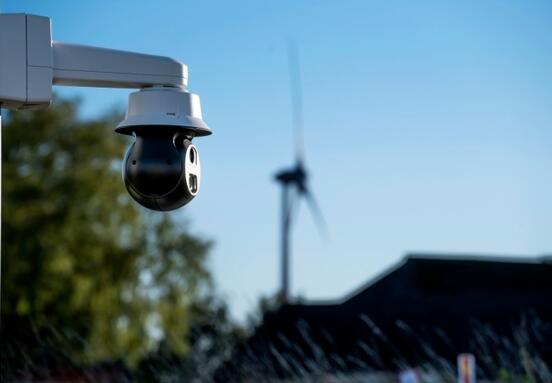Investment volume for the 2nd quarter and 1st half of 2023 across Central and Eastern Europe was one of the lowest in history. Poland secured the majority share of regional volumes at around 42%, but overall activity was slow. The Czech Republic followed with a 34% share, while Slovakia's share was at the level of 9.5%. Bulgaria was the only market in the region to see a year-on-year increase, while all other markets saw volume declines ranging from 42% to 87%, Colliers reveals in its latest report, "Investment Scene 1H 2023".
Illustration photo: Wance Paleri / Unsplash.com
Silviu Pop, director of research for Central and Eastern Europe and Romania, provides information on the economic background of this low level of investment: "Economic growth in the CEE-6 region weakened at the beginning of 2023, with 3 countries, the Czech Republic, Hungary and Poland, recording in 1st quarter 2023 negative annual GDP growth, in contrast, Romania and Bulgaria recorded the best results, their economies grew by more than 2%. Slovakia recorded a positive growth of 1%. Ahead of the second quarter GDP results to be released in mid-August, we can state that the weak trend will continue, at least in the short term, as the situation is not improving in a relatively large number of countries."
INTEREST RATES AND INFLATION
High interest rates, an increase in cost risks and an uncertain global economic environment continue to negatively affect countries in the CEE region. Inflation remains a concern, especially since the decline in consumer price growth in recent months is largely driven by the volatile components of the consumer basket, especially energy. The so-called "net inflation", from which components such as energy and seasonal food are separated, is recording a decline.
INVESTMENT VOLUME GROWTH RATE IN CENTRAL AND EASTERN EUROPE
Kevin Turpin, Regional Head of Capital Markets CEE, said: “Volumes for Q2 and H1 2023 across CEE were some of the lowest on record at €2.02 billion. This means that in the first half of 2023, investment volumes in CEE fell by approximately 64% year-on-year. According to preliminary results, this is unfortunately in line with European and global results. Given the current conditions, especially in relation to the cost of debt, one can hardly predict market activity until the end of the year. However, we estimate that with the current direction it could reach 5.0 billion. euros or more." In the case of Slovakia, it is assumed that the total volume of transactions should remain above the level of 500 million euros.
The lack of data on market transactions lengthens the price discovery period, and a substantial market recovery will largely depend on an improvement in the inflation and interest rate environment. Although we have not yet seen significant signs of distress selling, refinancing, bond maturities, ESG compliance and other sector- or country-specific topics may impact some investors' holding strategies.
PRIME YIELDS FOR THE 1ST HALF OF 2023
Unlike the rest of the region, the majority of investment activity in Slovakia in the first half of the year was attributed to offices. Two of the largest transactions realized in the second quarter concerned office buildings in Bratislava's central business district, which were sold by Slovak developer J&T Real Estate. The first transaction included the sale of the office building Landererova 12 to ZFP Investments, the second transaction related to the acquisition of the office building Pribinova 19 (part of Eurovea) by IAD Investments.
FLOWS IN CENTRAL AND EASTERN EUROPE ACCORDING TO THE ORIGIN OF THE BUYER
Domestic capital in the CEE-6 region was the most active so far in 2023 with an impressive 59% share of total regional volumes. In particular, Czech capital (40%) secured the highest volume overall and almost 17% in only 2 transactions (both retail). Other regional capital of Central and Eastern Europe collected another 19%. They were followed by European (14%), Asia-Pacific (7%), US (5.4%) and Middle Eastern capital (5%).
TRENDS AND OUTLOOK FOR THE FOLLOWING MONTHS
"We still maintain a very positive long-term view of the CEE region. In the context of the geopolitical changes taking place around the world, the fact that the economies of Central and Eastern Europe have a solid track record of rapid economic development and still offer some of the most attractive wage-productivity differentials in the Western world, we would all the potential medium-term difficulties they considered opportunities oriented to a longer period," concludes Pop.







